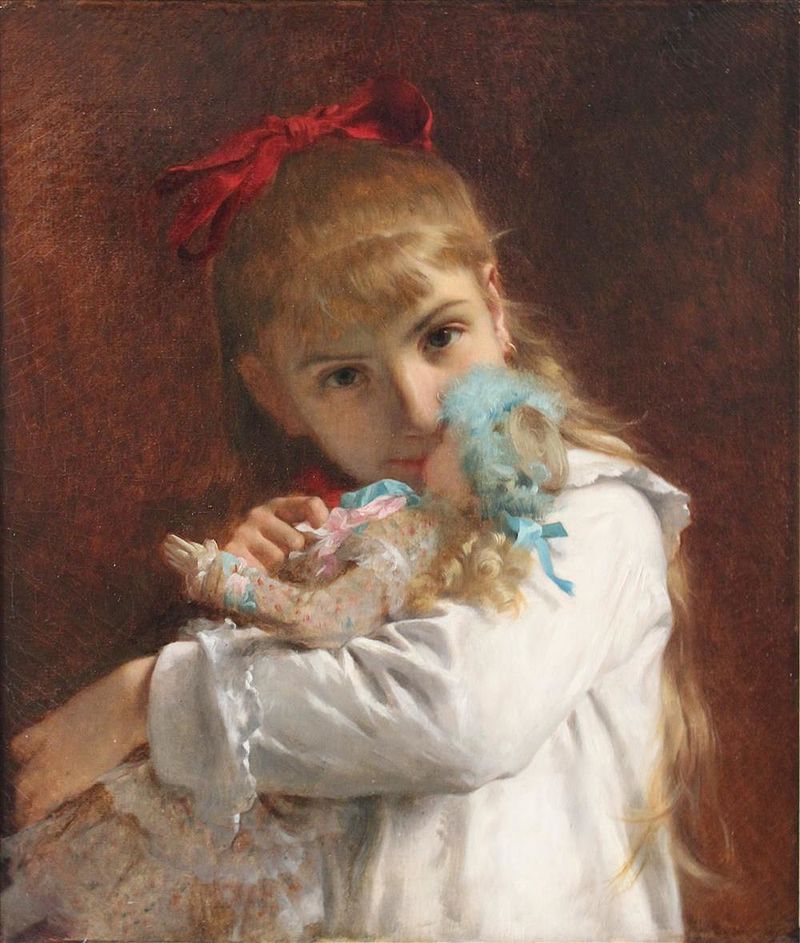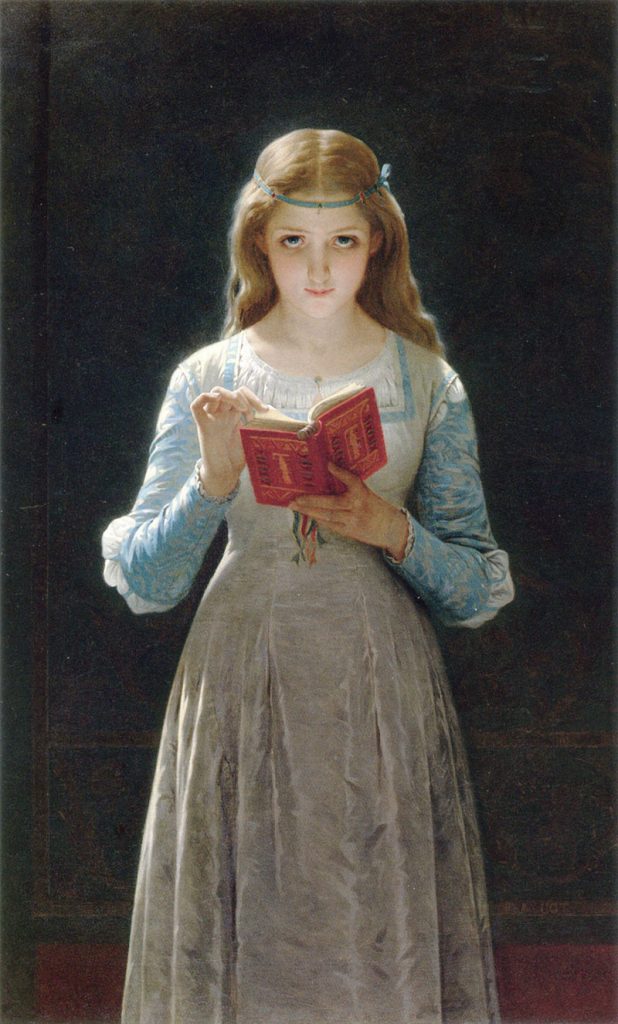
Pierre Auguste Cot (1837–1883) was a French Academic painter known for his romantic and idealized depictions of historical and mythological subjects. Born on February 17, 1837, in Bédarieux, a town in the south of France, Cot demonstrated an early aptitude for art. His talent caught the attention of local patrons, leading to financial support that enabled him to pursue formal artistic training.
In 1857, at the age of 20, Cot moved to Paris to study at the École des Beaux-Arts. There, he became a student of the renowned history painter William-Adolphe Bouguereau. Under Bouguereau’s guidance, Cot honed his technical skills and embraced the academic tradition, which placed a strong emphasis on classical subjects and precise draftsmanship.

Cot quickly distinguished himself as a promising artist, earning recognition and awards for his work. In 1861, he received the prestigious Prix de Rome, a scholarship that allowed him to further his studies at the French Academy in Rome. The experience in Rome exposed Cot to classical art and antiquities, leaving a lasting impact on his artistic sensibilities.
Upon his return to Paris, Cot’s career flourished. He gained popularity for his paintings, which often depicted scenes from mythology, literature, and history, infused with a sense of romance and idealization. One of his early successes was the painting “The Storm” (1870), which showcased his ability to capture dramatic emotions and dynamic compositions.
Cot’s masterpiece and perhaps his most famous work, “Springtime” (also known as “Primavera”), was completed in 1873. This painting, featuring a young couple in a garden, epitomizes the romantic and idealized style for which Cot became renowned. The soft, ethereal lighting and the delicate rendering of fabrics reveal his technical prowess and commitment to creating visually captivating scenes.

As an Academic artist, Cot enjoyed considerable success and patronage. His works were sought after by collectors, and he received numerous commissions from both private individuals and public institutions. Cot’s paintings adorned the salons of the French elite, contributing to his reputation as one of the leading artists of his time.
Beyond his success in France, Cot gained international recognition. His paintings were exhibited and acclaimed in major art centers, including London and the United States. The international acclaim further solidified Cot’s status as a prominent figure in the art world.
Despite his success, Cot faced personal challenges, including the death of his wife in 1880. The loss had a profound impact on him, affecting both his personal life and his artistic output. Cot’s later works reflected a more somber and introspective mood, deviating from the lighthearted romanticism of his earlier pieces.
Tragically, Pierre Auguste Cot’s life was cut short at the age of 46. He passed away on August 2, 1883, leaving behind a legacy of romantic and meticulously crafted paintings that continue to captivate audiences. Cot’s influence persisted through the works of his students and the enduring popularity of his masterpieces.

In the years following his death, Cot’s reputation experienced a decline with the changing tides of art movements. The rise of Impressionism and the subsequent avant-garde movements overshadowed the Academic style that Cot championed. However, a renewed interest in 19th-century Academic art in the late 20th century led to a reevaluation of Cot’s contributions to the art world.
Today, Pierre Auguste Cot is remembered as a skilled Academic painter who excelled in the romantic and idealized representation of historical and mythological subjects. His legacy endures through the timeless beauty of his paintings, each canvas a testament to his technical mastery and ability to convey emotion through art. Cot’s work remains an integral part of the rich tapestry of 19th-century French art, capturing the spirit of an era that valued classical traditions and the pursuit of beauty in the visual arts.






